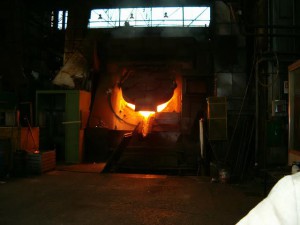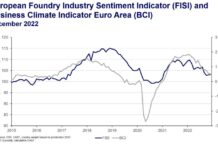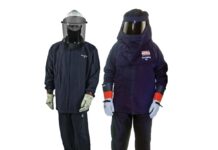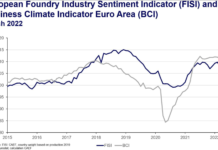An example of electric energy saving reached thanks to the use of New automation solutions of the flow rate system of the suction plant.
Zanardi Fonderie at Minerbe, in Verona province, family-owned company today run by the fourth generation, produces spheroidal graphite castings. The company, which has been operating on the market since 1931, knows that management costs are important for competitiveness, preserving anyway the quality and flexibility fundamentals that have always characterized this productive reality well-known in the sector.
The corporate strategy consists in pursuing the optimization of the productive efficiency of the system. Therefore, to improve in particular the energy efficiency, Zanardi turned to G.B.M. S.p.A. in Milan, trade company with a long supply tradition also in the foundry world. G.B.M. has immediately involved Emerson Industrial Automation Italy S.p.A. that has promptly operated to assess the possibility of reducing the energy consumption of the centralized system of fume suction, determining plant for the operators’ health and involving a relevant energy consumption.
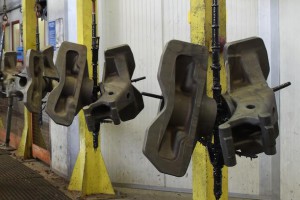
The problem: regulating the suction system flow rate
The expert in Energy Saving of Emerson Industrial Automation, with the collaboration of Massimo Ceschel, production manager in Zanardi, acquired the available data as well as a clear picture of the plant operation and of the performance and economic requirements demanded. The evident target consisted in automating the flow rate regulation of the suction system, thus drastically decreasing electrical consumptions. Alessandro Zanardi, engineer and technical manager of Zanardi Fonderie, provided Emerson technicians with numerous information about the consumption trends, the necessary flow rates for the correct system operation in all its productive phases (for instance, casting, slagging, tap, etc.) and the details about the yearly operating hours of the system. Besides, they analysed the problems concerning the use of sensors for the adjustment of the differential pressure (between operation and atmospheric pressure) that has successively led to opt for the use of a system without vulnerable instruments, operating in environment at high temperatures and with abrasive powders.
According to the collected data, they hypothesized several scenarios of plant flow rate adaptation to the specific needs given by each phase, defining a simple and effective technical solution: replacing the current motor with a higher efficiency motor and controlling it by means of an Emerson Industrial Automation inverter. The hypothesis was presented with a detailed technical-economic report that defined a payback period of less than two years of operation, without considering intentionally the white certificates attainable on the plant.
In the phase of the first theoretical assessment, Mr Zanardi involved the integrator entrusted with the process automation, the company Progelta at Rubano (Pd), to define the method of inverter interfacing and regulation, for the modulation of the fan flow rate. The system, managed by a PLC and a synoptic on PC, communicates with the inverter in Profibus adapting the flow rate reference to the various phases, well known to the PLC itself.
The intervention, of conservative type, provides for the integration of the inverter system in parallel with the existing electromechanical starting; this allows using the antecedent system as emergency by-pass for the new inverter board.
A high efficiency and compact inverter board
The Powerdrive MD2 inverter board has been positioned in the field, close to the motor. However, the costs for the laying of motor cables, both power and signal ones, turned out higher than what estimated in design phase. The Leroy Somer motor has comfortably replaced the one previously used, during a programmed productive pause that lasted some days. Since the system commissioning time, the registrations of the consumptions after the intervention started again. The system provided a positive response from the functional point of view and the flow rate reduction in some operating phases does not absolutely affect the real suction performance of the system. Finally, with great satisfaction of all the players of the Industrial Energy Saving project, the fan consumes on average less than 1,200 kWh/day against the previous 2,000 kWh/day. The 40% saving in the energy bill! The attained saving, compared to the overall costs of the operation (in the final balance), certifies, in the present productive conditions, an investment payback time under two years.
Besides all that, a further added value is given also by EEC (Energy Efficiency Certificates) of type 1 that this project attains, not negligible figures indeed that reduce the payback times to year fractions.
In conclusion, we deduce that with a simple, but effective, upgrading intervention of the suction system, Zanardi Fonderie S.p.A. has notably reduced electric consumptions and has also made the productive process less polluting. A simple and proven solution, analysed and produced by Emerson Industrial Automation Italy S.p.A., was sufficient.
Zanardi Fonderie
Zanardi Fonderie is an Italian foundry headquartered at Minerbe, in Verona area. The company, established in 1931, strongly staked on ADI already since 1983. Today it has a productive capacity of 25,000 t/year, of which 10,000 of ADI.

